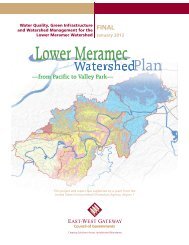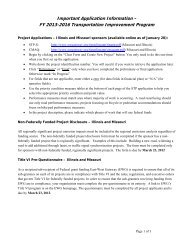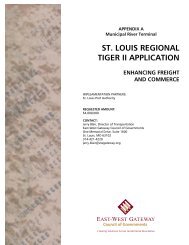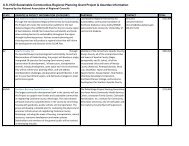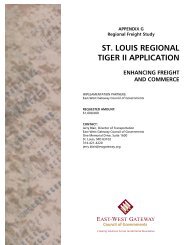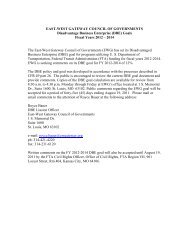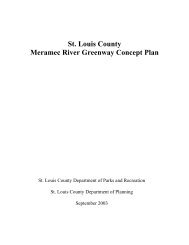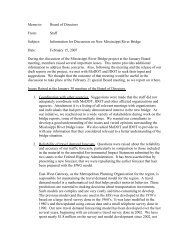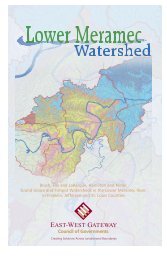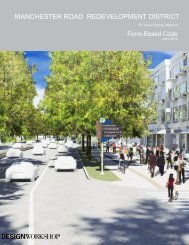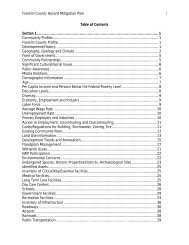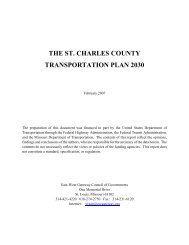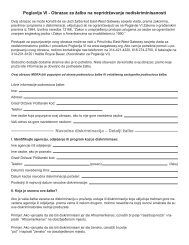Jefferson County - East-West Gateway Coordinating Council
Jefferson County - East-West Gateway Coordinating Council
Jefferson County - East-West Gateway Coordinating Council
Create successful ePaper yourself
Turn your PDF publications into a flip-book with our unique Google optimized e-Paper software.
A Regional Overview All-Hazard Mitigation Plan 55<br />
F-Scale (Fujita 1981), as listed in Storm Data. This study follows the accepted nomenclature<br />
that F2 and F3 tornadoes are strong and F4 are violent.<br />
Ostby (1993) found that the occurrence of weak tornadoes (F0-F1) has shown a dramatic<br />
increase since 1980, while the number of strong and violent tornadoes have either<br />
remained steady or decreased. Reasons for this include improved verification efforts by<br />
local NWS offices and the marked increase in storm chasing. Since strong and<br />
violent tornadoes produce a more stable long-term data set, these categories were the<br />
main focus of this study.<br />
Description of Hazard<br />
A tornado is a vortex of rapidly rotating air that must be in contact with the ground. This<br />
means that to be a tornado, the swirling winds must be at the surface, capable of doing<br />
damage. If there is debris (dust and other objects swirling in the winds), it is definitely a<br />
tornado, even if there is no visible funnel cloud. If there is no debris with a funnel cloud,<br />
then it might be a tornado but one cannot be certain that it is (or is not). A tornado can<br />
move over a surface with few objects to be picked up and swirled about, or one may not<br />
be able to see all the way to the surface beneath a funnel cloud because of intervening<br />
hills, trees, or buildings. All funnel clouds should be treated as if they are tornadoes, unless<br />
one can be certain that they will not touch down. See Figure J32 below.<br />
FIGURE J32 VIEW OF TORNADIC THUNDERSTORM<br />
Source: NOAA<br />
When storms influence a large area, the chances for significant hazards increase. The<br />
majority of windstorms in a convective system are of marginal severity, with only isolated<br />
events reaching high intensity. The most threatening situation would be for a very intense<br />
convective wind event that also affected a large area. It appears that a few times each year<br />
in North America, extreme convective wind events of this sort do occur. To date, no such<br />
storm has struck a major city during a vulnerable time (e.g., the morning or evening rush<br />
hours). However, it is only a matter of time until this sort of unfortunate concatenation<br />
actually occurs. Given that the area affected can approach that of a tropical cyclone's<br />
damage swath, and certainly far exceeds that affected during a tornado outbreak (while



